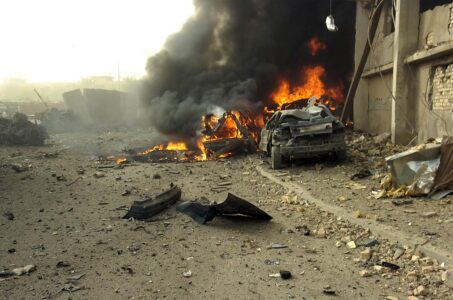
Islamic State’s IEDs attack and terrorize civilians even after its defeat
Wars leave behind unexploded munitions, mines, and, particularly in recent times, Improvised Explosive Devices (IEDs).
The US is the largest sponsor of the removal and destruction of such hazards, having provided nearly $3 billion to over 100 countries for Conventional Weapons Destruction (CWD) since 1993 when the State Department’s Office of Weapons Removal and Abatement (WRA) was established.
The US military deals with such hazards on the battlefield, but once the fighting ends, it falls to WRA to clear areas contaminated by explosives.
A unit of the State Department’s Bureau of Political-Military Affairs, WRA has just published its annual report. Fully one-sixth of total US expenditures on CWD since 1993 has been in the Middle East, with 2/3 of that sum spent in Iraq.
In fact, Iraq is second only to Afghanistan in the financial support it has received from the US for the removal of these weapons.
A significant part of that money has gone to defusing the IEDs left behind by the Islamic State (IS.)
Stanley Brown, who heads the WRA office, described to Kurdistan 24 the particular malevolence of IS’ explosive devices.
The IED’s “were left in place to impact the return of civil societies,” Brown explained. “But they were also designed in some cases to make them difficult to defuse.”
In Mosul, a teddy bear was discovered that had been made into an IED.
IEDs have also been found in televisions, refrigerators, and even vacuum cleaners, other members of the WRA office told Kurdistan 24. “You name it,” they said. “Anything that can kill civilians.”
“The way these explosive devices are being employed is unlike anything else we’ve seen before in the world,” they added.
Sometimes, the IEDs have more than one trigger: a motion detector, as well as a light sensor, and something called a “crushwire wedge,” which is easy to conceal. A very great deal of skill is needed to defuse those devices.
Typically, WRA sees bombs and mines left over from a military conflict, but the IEDs left behind by IS “have nothing to do with targeting combatants. It’s all about killing innocent civilians,” as they return home.
Thus, IS disrupts efforts to stabilize an area, even after it has been driven out.
In addition to assisting Iraq’s Directorate of Mine Action, WRA also works with the Iraqi Kurdistan Mine Action Agency, IKMAA. In the Kurdistan Region—where the Peshmerga held off IS and prevented it from taking territory—those activities focus on “legacy work,” defusing explosives left over from Saddam Hussein’s wars.
The WRA has a “great working relationship” with IKMAA, Kurdistan 24 was told. IKMAA “has been an incredible partner” in working with the NGOs and contractors that WRA hires to carry out the demining work.
Until October, IKMAA was also responsible for clearing IEDs in the disputed areas that IS occupied. The attack on those areas by the Iraqi Army, in conjunction with Iranian-backed militias, has presumably disrupted that work.
The situation in Syria is no different from that in Iraq, Kurdistan 24 was told.
It will take years before all of IS’ bombs are defused—and that assumes the conflict is not renewed, with the emergence of yet another iteration of IS.
Source: Kurdistan 24





